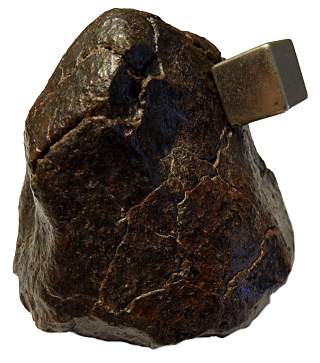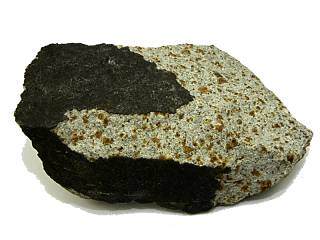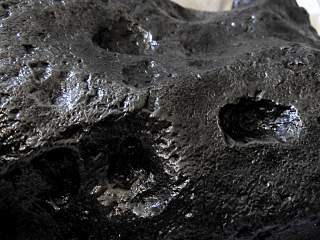|
Do you think you have found a meteorite?
To
establish if a stone is a meteorite we must perform complex lab tests. However,
although they are not conclusive, there are some simple tests that can provide
some hints in order to know if our stone is a meteorite or not. Some of them are
described below:
-
Magnetic properties.
Most meteorites contain iron. So, they are attracted by magnets. If there is
no attraction, most likely our stone is not a meteorite. However, if we do
have attraction the test is not concluding, as some rocks on Earth, for
instance magnetite, also exhibit magnetic properties.

-
Fusion crust.
Due to the high temperature they reach when they impact with our atmosphere,
the surface of meteorites melt as they fall. Before reaching the ground this
melted surface solidifies as temperature decreases, creating a dark crust.
Usually cracks are found in fusion crusts. If a stone exhibits this kind of
crust, most likely we have a meteorite. But the test is not conclusive, as
the fusion crust is chemically altered with time and eventually disappears.

-
Existence of
regmaglypts. These are characteristic marks appearing on the surface of
meteorites. These are cavities produced by the flow of air at high speed
when these stones fall. This test is not conclusive, as other stones on
Earth show these cavities as a consequence of erosive processes.

-
Density
measurements. Most stones on Earth have a density ranging between 2 and 3 g/cm3.
For most meteorites density is usually higher, between 3 and 8 g/cm3.
This test is not conclusive, as some meteorites have lower densities, of
about 1.8 g/cm3.
|